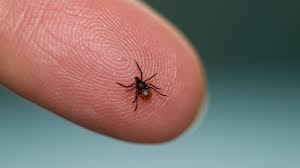
Lyme disease affects each dog a little different as it does with humans. Many dogs that are affected with lyme disease seem to be in pain and may even stop eating. Many will run a high fever. Lyme disease affects the entire body, some dogs may become lame and if untreated the lameness can disappear but can often reappear later on in life. It is possible that your dog may not even show any signs of an illness for a long period of time and still be infected with lyme disease, the symptoms can show up a year or more later.
Diagnosis of lyme disease can be done with a simple blood test. If your dog has had the illness for a long time, confirming that it is, in fact lyme disease can be troublesome to prove. In many cases, the antibodies that are present when a dog has contracted lyme disease may have already disappeared.
The best way to ensure that your dog does not contract lyme disease is prevention. You should always groom your dog after going outdoors especially when in and around areas where ticks may live such as, high grass, thick brush, or even in the woods.




